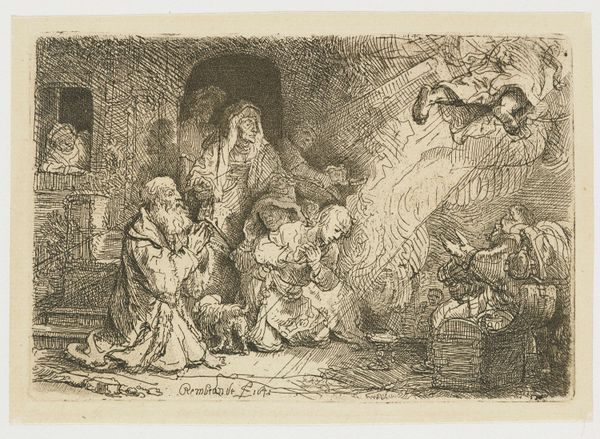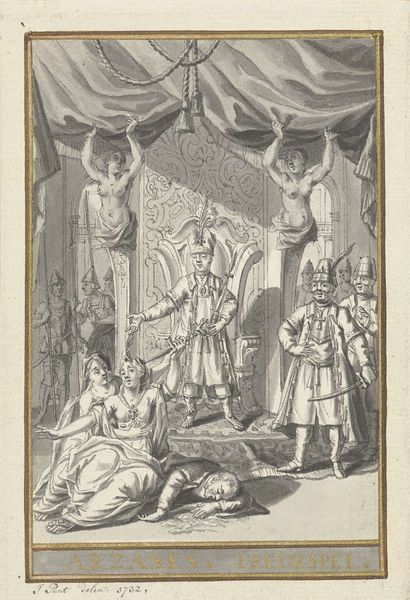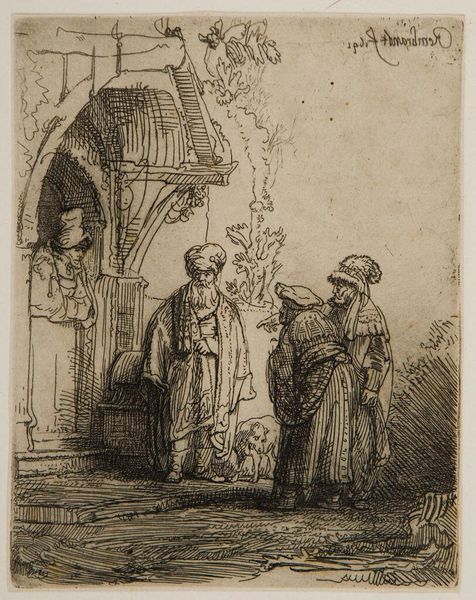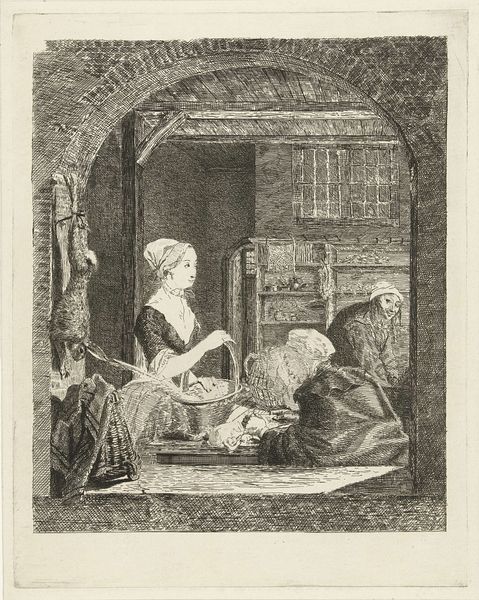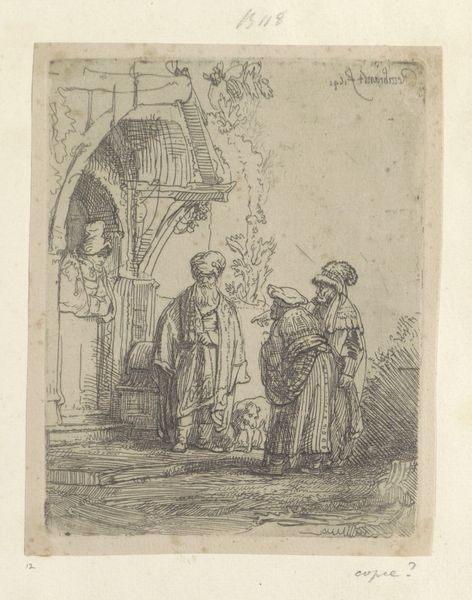
drawing, etching, pen, engraving
#
drawing
#
allegory
#
narrative-art
#
etching
#
caricature
#
pen
#
genre-painting
#
history-painting
#
engraving
Dimensions: height 223 mm, width 177 mm
Copyright: Rijks Museum: Open Domain
Bernhard Schreuder created this drawing, "The Rich Man and Poor Lazarus," sometime before 1780. It depicts a parable from the Gospel of Luke, a religious narrative used to explore themes of inequality and divine justice. The drawing highlights the vast differences in social status. On one side, we see a wealthy man in elaborate robes, standing in front of what looks to be a grand house adorned with grapes, symbols of excess and luxury. On the other side, Lazarus, a poor beggar covered in sores, lies on the ground with dogs licking his wounds. The dogs are the only beings showing him compassion. In 18th-century Europe, such depictions served not only as religious instruction but also as social commentary. They reflect the era’s complex attitudes toward poverty, wealth, and morality, with its rigid class structures and growing social consciousness. How might such a scene make you think about the structures of care, charity, and indifference that shape our contemporary world?
Comments
No comments
Be the first to comment and join the conversation on the ultimate creative platform.

